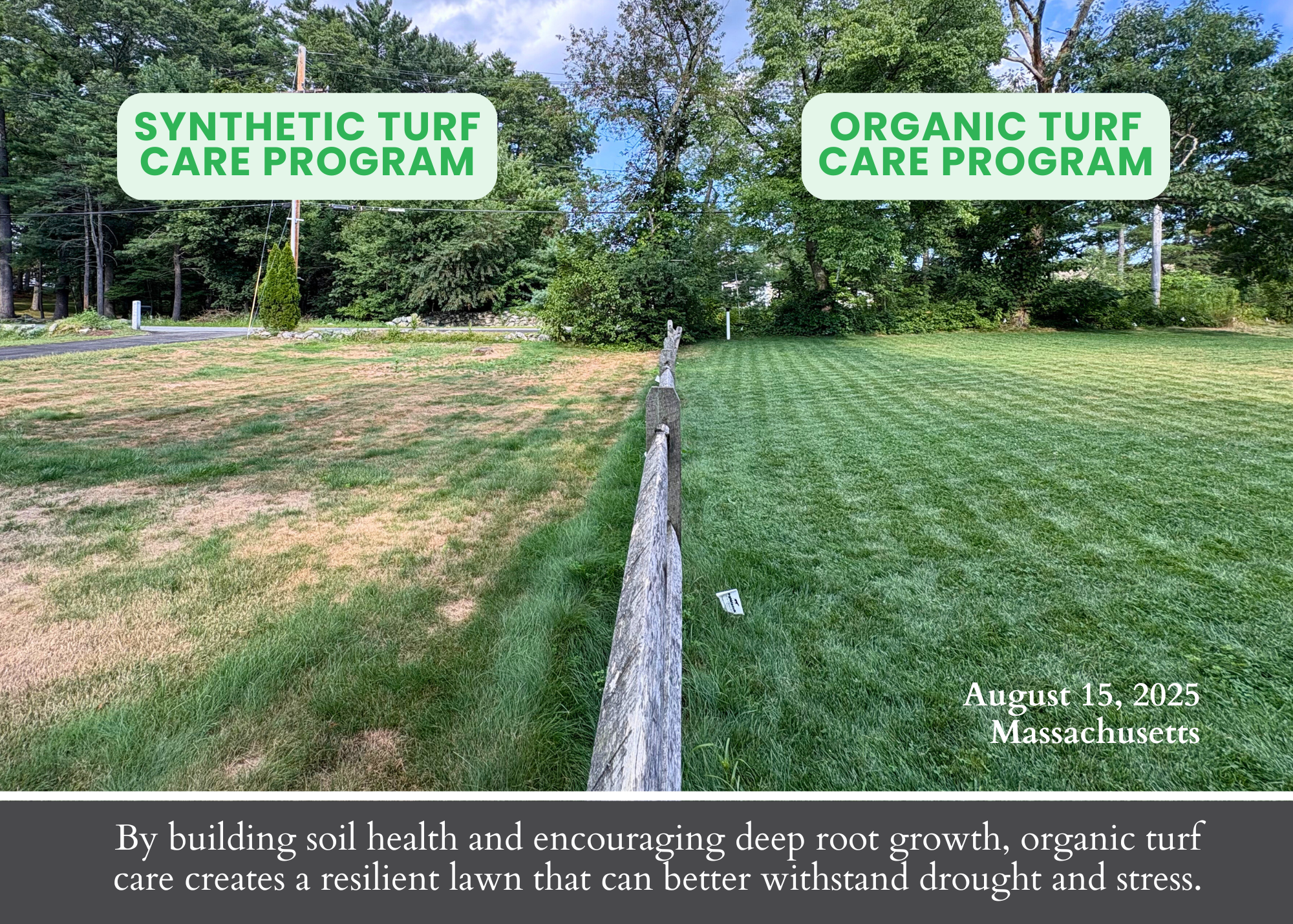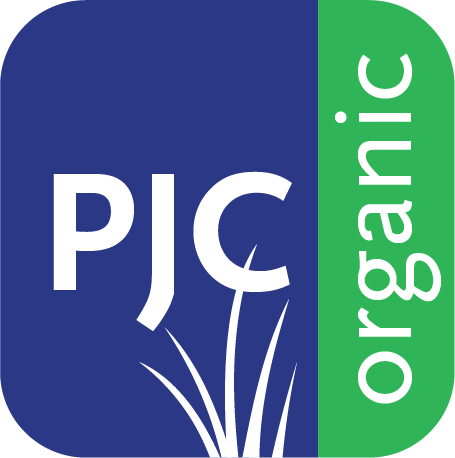Seasonal Outlook & Drought Comparison for New England Lawns — 2025 vs. 2024
Seasonal Outlook for 2025
As we enter the August–October 2025 period, the seasonal forecast looks very similar to 2024. According to NOAA’s Climate Prediction Center, there is a high probability of above-normal temperatures with equal chances of above- or below-normal precipitation across much of the Northeastern U.S.
Currently, ENSO-neutral conditions are prevailing, with a modest chance of shifting toward La Niña later in the fall (Climate.gov, Climate Prediction Center). We’ve already seen instances where soil temperatures dipped below average this summer, helping irrigated areas bounce back.
Drought Conditions in 2025
As of August 14, 2025, the U.S. Drought Monitor reports:
- 7.16% of the Northeast is experiencing moderate drought.
- 37% of the region is considered abnormally dry (D0).
This represents a significant increase from last week’s report and suggests potentially worsening conditions as we head into fall (NRCC, Drought.gov).
Comparing 2025 to 2024
In contrast, August 2024 showed far fewer dry areas in New England. Drought was primarily concentrated further south—in Pennsylvania, West Virginia, and Maryland.
During August–October 2024, conditions began hot but drought didn’t truly develop until mid-September. By late October, large parts of the Northeast were classified as Abnormally Dry to Severe Drought (U.S. Drought Monitor, Drought.gov).
The comparison highlights a worrying trend for fall 2025, where conditions may decline sooner.
Fall Lawn Recovery Matters
Fall remains the most important time to help lawns recover, especially after the challenging conditions of fall 2024 and spring 2025.
Key Tips for Lawn Recovery:
- Don’t turn off irrigation too early. In 2024, many lawns struggled because a dry spell curtailed overseeding efforts and stressed vegetation.
- Mow high for resilience. Irrigated areas that were mowed higher showed stronger recovery as summer ended.
- Focus on cultural practices. With current environmental stressors, proper mowing, irrigation, and soil care have an outsized impact on the success of a turf management program.
Organic vs. Synthetic Lawn Care

This image shows the difference between an all-natural organic lawn and a full synthetic program — both irrigated. The lawn on the left depends on chemicals and fades in drought. The lawn on the right has been chemical-free for 20+ years, and it thrives! The organic side demonstrates stronger color and coverage, reinforcing the long-term benefits of sustainable, soil-health-focused practices.
Sources
- NOAA Climate Prediction Center — Seasonal Climate & ENSO Outlooks
- U.S. Drought Monitor — Northeast Data
- NRCC — August 2025 Drought Summary
- NOAA NCEI — Monthly Drought Report for August 2024
- Soil Temperature Tool
